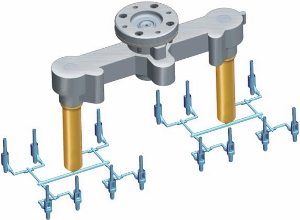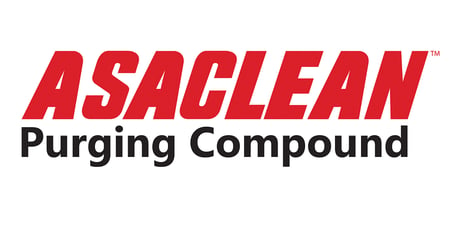
Earlier this year, I worked on purge project with an operations manager at an extrusion plant in Canada. He was constructing plastic sheet in various colors out of High-Density Polyethylene (HDPE), anywhere from four to five feet wide. His predicament was trying to figure out how to simplify color conversions. He wanted to make them more efficient and enable faster start-ups.
He was losing anywhere from 16 to 20 valuable production hours in total for each change. It took him approximately 125 pounds of purge compound to try to remove some of the preceding color before shutting the line down and performing a die teardown for a manual clean. After restarting the machine, he would then generate a few thousand pounds of scrapped HDPE due to the previous color bleeding out from somewhere within the system.
I performed a brief technical consultation with him to get a better understanding of the operating environment of their system. I reviewed what their routine process was to facilitate color conversions systematically. I also analyzed what their associated purging costs were to help him establish what their ‘Cost Per Purge’ baseline was.
I suggested five tips, after our brief consultation:
- Elevate the temperatures in all heat zones to whatever he was willing and able to achieve to generate adequate chemical activity.
- Pre-flush the line and downstream equipment with natural HDPE to get the bulk of the previous color out.
- Use a high-quality heat-activated chemical purging compound specially selected for this low-pressure application and the melt index of their HDPE.
- Use a full system capacity of the chemical purging compound (in this case Asaclean NCR) to ensure proper filling and pack out the entire system.
- Let the chemical purge dwell within the system by rotating the screw at low RPM’s, for quick heat soak to attack and breakdown the color.
The operations manager joyfully reported that the chemical purge I recommended worked well. He said it was easy to use and was impressed with the performance. All he had to do on start-up was wait for the heats to get to normal operating temperature, and then began making sell-able sheet virtually right away. Because of the suggestions, he accomplished a color change without having to execute a die teardown for a manual clean. This adjustment reduced downtime by 75%. Additionally, it saved a few thousand pounds of HDPE for producing sheet.
Learn how to reduce machine downtime with five quick purging compound tips for your injection molding application.

Ben Moore brings over 20 years of experience as a Purging Expert at Asaclean Purging Compounds, a leading manufacturer and distributor of purging compounds. As part of Asahi Kasei Plastics North America, Inc. (APNA), Ben has personally assisted hundreds of customers, helping them achieve significant cost savings. Based in Parsippany, NJ, Ben specializes in optimizing operations for thermoplastic injection molding, extrusion, compounding, and blow molding processes. His expertise lies in maximizing production efficiency by minimizing downtime and reducing scrap. For those interested in trying Asaclean products or seeking expert guidance, feel free to contact Ben directly. You can contact him at 800-787-4348, extension 227, or via email at bmoore@asaclean.com.








Comments